« Mt. Sinai as a Thin Place | Home | The Temple as a Thin Place »
More Thin Places in Exodus
By Mark D. Roberts | Thursday, May 14, 2009
Part 4 of series: Thin Places
Permalink for this post / Permalink for this series
In my last post, I examined Mt. Sinai as a thin place, that is, a place where God is experienced with unusual propinquity. (Now there’s a word I haven’t used or even thought of in about thirty years. “Propinquity” means “proximity.” It is the state of being physically close to someone or something.) If ever there was a thin place, this would have to be Sinai, because that’s where God first revealed himself to Moses in the burning bush, and then made his presence known in forming the covenant and giving the law to Israel. Yet, as I mentioned at the end of my last post, we have no reason to believe that the Israelites continued to regard Sinai as a special place where they might experience God in a special way.
The Pillar of Cloud and the Pillar of Fire
 Other thin places in Exodus are similarly ambiguous with respect to their enduring thinness. After the Israelites began their journey from Egypt to the Promised Land, God led them by a pillar of cloud by day and a pillar of fire by night (Exod 13:21-22, for example). The text states that God was “in” the pillar in way that God is not ordinarily “in” the world. In fact, the Lord spoke to Moses from within the pillar (Exod 33:9). Once more, it would be hard to discount the thinness of these pillars, but, although they take up space in the world, they don’t inhabit one particular place. At best, one might say they are moving thin places. (Photo: Tintoretto, “The Pillar of Fire,” 1577-1578)
Other thin places in Exodus are similarly ambiguous with respect to their enduring thinness. After the Israelites began their journey from Egypt to the Promised Land, God led them by a pillar of cloud by day and a pillar of fire by night (Exod 13:21-22, for example). The text states that God was “in” the pillar in way that God is not ordinarily “in” the world. In fact, the Lord spoke to Moses from within the pillar (Exod 33:9). Once more, it would be hard to discount the thinness of these pillars, but, although they take up space in the world, they don’t inhabit one particular place. At best, one might say they are moving thin places. (Photo: Tintoretto, “The Pillar of Fire,” 1577-1578)
The Tabernacle and Tent of Meeting
The Tabernacle dominates the latter portion of the Book of Exodus. It was a sanctuary for the Lord, a large, ornate, sophisticated tent structure. Because it was a tent, the Tabernacle was portable. It could move with the Israelites as they journeyed in the wilderness on their way to the Promised Land.
The Tabernacle, which was set up within a portable court, was itself divided into two sections. The larger section was the Holy Place, where various sacred items were housed. The smaller section was the Most Holy Place (traditionally, Holy of Holies), which contained the Ark of the Covenant. The Lord made his presence known in a unique and powerful way in the Most Holy Place.
Prior to the construction of the Tabernacle proper, which was sometimes called the “Tent of Meeting,” Moses had another, smaller Tent of Meeting in which he would meet with the Lord for personal conversation (Exod 33:7ff.). When the pillar of cloud descended on this Tent, the people would bow down to the ground, and the Lord would speak to Moses “face to face” (33:11).
When the official Tabernacle was consecrated, the Lord visited it in a most striking way. His glory filled the Tabernacle to such an extent that Moses was not able to enter it (Exod 40:34-36). The pillar of cloud and the pillar of fire rested upon the Tabernacle, signifying the powerful presence of God. The Israelites would remain in a given location until the pillar (or cloud) would be lifted from the Tabernacle as a sign that it was time to move on.
Reflections on the Pillars and Tents in Exodus
The Lord made himself known to his people in unusually immediate and sensational ways during the Exodus. In a way, the pillars of cloud and fire, and the Tents of Meeting (both Moses’ tent and the official Tabernacle), were exemplary thin places. Except for the fact that they weren’t places, strictly speaking. They were physical objects or realities that took up space and inhabited places, but didn’t remain in these places. What is perhaps most striking about these physical manifestations of God is their portability.
Yesterday, we noted that Mt. Sinai was a kind of thin place. God made his presence known there in an extraordinary way. But Sinai was not a thin place in the sense that it continued to be a portal to heaven in the eyes of the Jewish people. Today, we see thin places that aren’t quite places. For a while, the pillars and tents were space-time realities through which God revealed himself in certain places. But these manifestations were not stationary places.
Moreover, it’s worth remembering that God’s presence in a place did not necessarily make it hospitable, like a peaceful retreat center. When the Lord descended on Sinai with pyrotechnic splendor, the people were told to keep their distance, and that’s exactly what they wanted. And when God’s glory filled the Tabernacle, even Moses couldn’t enter it. When thin places get very thin, we might need to keep our distance.
The Book of Exodus suggests that God makes himself known to us in places and spaces, but that they are not stationary thin places were God’s presence can regularly be experienced. Nothing in Exodus denies the existence of such places stationary thin places. But nothing in Exodus commends them, either.
Of course, as the story of Israel progresses, the Tabernacle becomes replaced by the Temple, which exists in a solitary location. In my next post in this series I’ll consider ways in which the Temple might be an exemplary thin place.
Topics: Thin Places |
One Response to “More Thin Places in Exodus”
Comments
Thanks for your willingness to make a comment. Note: I do not moderate comments before they are posted, though they are automatically screened for profanities, spam, etc., and sometimes the screening program holds comments for moderation even though they're not offensive. I encourage open dialogue and serious disagreement, and am always willing to learn from my mistakes. I will not delete comments unless they are extraordinarily rude or irrelevant to the topic at hand. You do need to login in order to make a comment, because this cuts down on spam. You are free to use a nickname if you wish. Finally, I will eventually read all comments, but I don't have the time to respond to them on a consistent basis because I've got a few other demands on my time, like my "day job," my family, sleep, etc.
You must be logged in to post a comment.
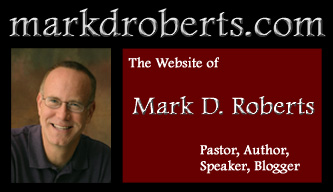



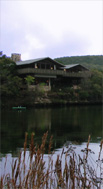
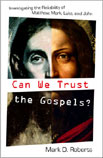


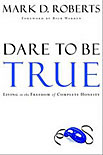

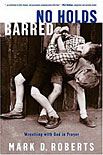
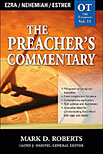
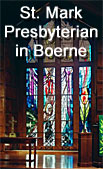

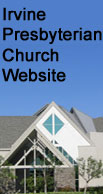
May 14th, 2009 at 8:32 am
Mark,
This is a very fascinating blog series! I think that my first question would be on the fundamental presupposition of a world view of a distant God and heaven (as God’s dwelling place): “The metaphor assumes a worldview in which heaven and earth are, in general, separated by a considerable distance.”
Isn’t a central part of the presentation of Jesus about the general availability (hence nearness) of God? “The Kingdom of God (the Heavens) is at Hand.”
My experience in the past few years has been along these lines. It feels like all of creation has become thin (except, of course, where there is particular willfulness and evil taking place).
Just my initial thought…
Thanks,
Terry